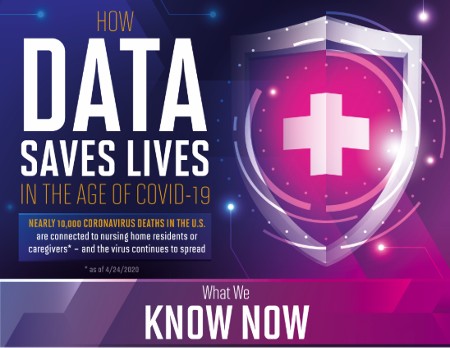May 20, 2020 – Demetrius Harrison, a regular contributor to 21st Century Tech Blog approached me with this subject and I felt the two of us together could combine our efforts in preparing this piece. In it, we look at how available technology that you and I can easily obtain can help in detecting and combatting the spread of COVID-19. Some of you know that my wife and I were infected and are still recovering from the virus. Demetrius has created an interesting infographic that accompanies the blog. We both hope you enjoy the content.
Coronavirus is most serious for people aged 65 and older, and although the use of lockdowns and quarantines can be a barrier to spread, it is turning out not to be working in long-term care homes dedicated to seniors with chronic health conditions. In these facilities both residents and caregivers have proven to be extremely vulnerable to COVID-19’s spread.
Theresa Tam, Canada’s Chief Public Health Officer, recently reported that 81% of the country’s coronavirus deaths have taken place in nursing homes. In Tam’s May 18 report, she announced of the 5,805 deaths from COVID-19 in Canada, 4,702 involved seniors.
Canada isn’t alone in seeing seniors with underlying conditions succumb to the virus. As of April 24, nearly 10,000 American COVID-19 deaths were connected to nursing home residents or caregivers. In the United Kingdom, London’s Care Quality Commission announced that 5,889 care homes reported suspected outbreaks of symptomatic or confirmed coronavirus as of May 17.
Most nursing homes are checking residents’ and caregivers’ temperatures each day to catch warning signs of the virus but this isn’t stopping its onset.
Are there better tools in this digital age that can help with early detection or combat community spread?
To defeat the virus epidemiologists note we need lots of data. We need to know the seriousness of an outbreak by locality. We need to know where are the areas of greatest exposure to risk. And we need to understand local social and environmental conditions that can contribute to the spread.
Here are some simple digital tools that can help us to get the data needed in our fight. Everyone can participate in the fight by using one or more of these devices.
Smart Thermometers
Before talking about using temperature as a barometer of COVID-19 infection or not, it should be noted that many who get sick never have a fever. Nonetheless, fever is the most commonly described symptom associated with the virus.
That’s why a smart thermometer that can identify geographic coronavirus hotspots would be a valuable weapon. The Kinsa Smart Thermometer is designed to do just that by noting where people have become infected and helping to track down the infection source. Collecting temperature data can create an instant picture of the extent of virus in a neighborhood.
How does it work? The Kinsa Smart Thermometer on top of taking accurate body temperature compares readings to 500,000 others within a geographic area. The database already established has been growing by about 162,000 readings daily. Results so far show that the Kinsa thermometer consistently accurately forecasts the spread of virus 2-3 weeks ahead of the CDC.
Smart Rings
The Oura Ring is no ordinary ring to put on a finger. Designed originally to help people manage stress, the physiological data the ring collects is also seen as a way to track the presence of the virus.
It is currently being studied by UC San Francisco where researchers are developing an algorithm to go with the ring that can effectively predict the onset of the virus.
What does the Oura ring do? It measures body temperature, respiratory rate, and heart rate, and can identify patterns in the data it collects. The researchers hope they will be able to use the ring to predict the onset, progression, and recovery of COVID-19-infected patients.
Pulse Oximeters
These handy and inexpensive devices have been around for a long time and are used in hospitals to test the amount of oxygen in a patient’s blood. They use two types of light that pass through a blood vessel to measure oxygen levels. They easily clip on to a toe, finger, or earlobe.
So what makes them useful in helping to detect COVID-19?
Not everyone who gets the virus exhibits the common symptoms: fever, a dry cough, tiredness, loss of sense of smell, and more. In fact, COVID-19 can cause a condition in patients called hypoxia.
An infected patient can appear to be relatively symptom-free and suddenly go into respiratory failure because of low blood oxygen levels. In a hospital setting a pulse oximeter can be worn continuously when a patient is having breathing difficulties. But for someone at home the pulse oximeter could become an easy twice-daily check that could save a life, particularly if that person is asymptomatic and a potential silent spreader of the virus.
The digital age offers us a lot in helping to slow COVID-19’s spread. The technologies described above represent readily available solutions that can be widely adopted. Combined with social distancing, and the wearing of face masks, we can gain a measure of control over the virus.
You too can contribute to the pool of COVID-19 data without being a healthcare professional or virus carrier. Folding@home lets you share unused home computing power to aid in research into potential cures for COVID-19 and other diseases.

















